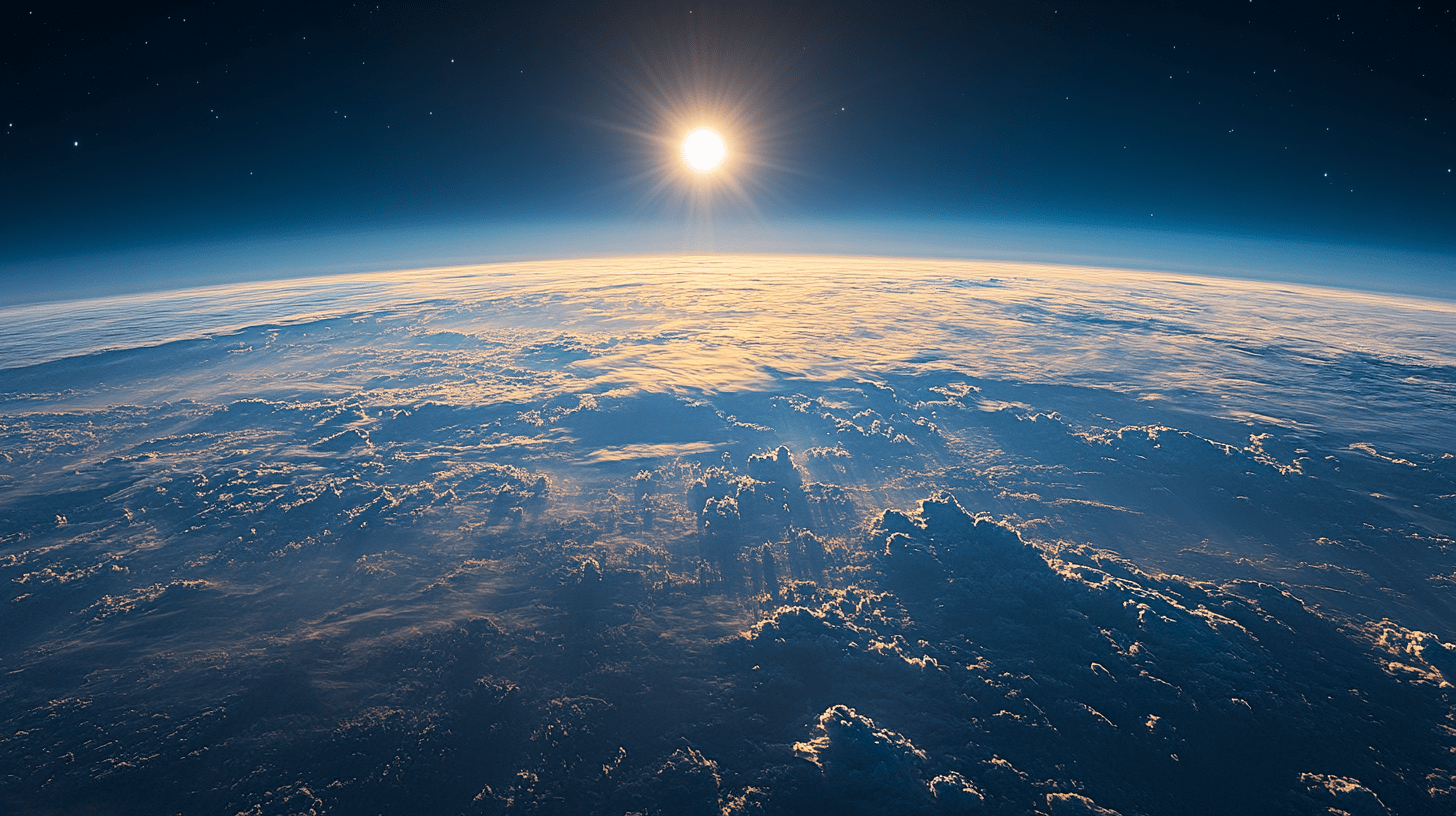The Ozone Layer: Understanding Earth's Invisible Shield
Explore the ozone layer's role in protecting Earth from harmful UV radiation. Learn about its formation, threats from human activities, and global efforts to ensure its recovery.

The Ozone Layer
The ozone layer plays a vital role in maintaining life on Earth, yet many of us overlook its importance. So, what exactly is this ozone layer, and why should we care about it? Let's dive into the fascinating world of this protector and discover its incredible powers.
What is the Ozone Layer?
The ozone layer might sound like a mysterious, distant part of the atmosphere, but it's closer and more important than you might think. Located in the stratosphere, about 10 to 35 kilometers (9 to 22 miles), or twice as high as airplanes fly, above us, this layer is rich in ozone molecules.

Ozone, which has the chemical formula O₃, is a bit of a superstar because it can absorb most of the Sun's harmful ultraviolet (UV) radiation.
Now, you might wonder how we know all this. Charles Fabry and Henri Buisson, two French physicists, discovered the ozone layer in 1913. They were interested in how Earth's atmosphere absorbs ultraviolet (UV) light. Using a spectrophotometer, they measured sunlight passing through the atmosphere and noticed that certain UV wavelengths were significantly absorbed.
They identified ozone as the substance responsible for this absorption. By analyzing the intensity of UV light at different wavelengths, they estimated the amount of ozone in the atmosphere.
How is Ozone created
So, how does Ozone form? It's all about a bit of photochemical magic. When UV light from the Sun hits the stratosphere, it encounters oxygen molecules (O₂). These molecules are split into individual oxygen atoms (O), which then dance around and combine with other oxygen molecules to form ozone (O₃). This process isn't just a one-time thing; it's a continuous cycle of ozone being created and destroyed, maintaining a delicate balance that keeps us safe.

Protection against UV radiation
Imagine the ozone layer as Earth's very own pair of sunglasses, shielding us from the Sun's harshest UV rays. There are three types of UV radiation: UV-A, UV-B, and UV-C.
UV-A Radiation
- Penetration: Reaches the Earth's surface.
- Effects: Causes tanning and can lead to sunburns with prolonged exposure.
- Health Impact: Less harmful than UV-B and UV-C, but can still contribute to skin aging and increase the risk of skin cancer over time.
UV-B Radiation
- Absorption: Mostly absorbed by the ozone layer.
- Effects: Can penetrate the skin and cause sunburns.
- Health Impact: More dangerous than UV-A, linked to a higher risk of skin cancer and cataracts. It can also suppress the immune system, making the body more vulnerable to infections.
UV-C Radiation
- Absorption: Completely absorbed by the ozone layer and atmospheric oxygen.
- Effects: Does not reach the Earth's surface under normal conditions.
- Health Impact: If it were to reach the ground, it would be extremely harmful, capable of causing severe skin burns and eye damage.
While UV-A makes it to the ground and gives us tans (or sunburns if we're not careful), UV-B and UV-C are mostly absorbed by the ozone layer. Without this protection, these rays could cause serious health problems like skin cancer, cataracts, and even suppress our immune system.
The Vital Role of the Ozone Layer
The ozone layer isn't just about keeping us safe from sunburns. It's a crucial player in maintaining the health of ecosystems around the world. For example, in the oceans, tiny organisms called phytoplankton form the base of the marine food chain. They're like the bread and butter of the ocean's diet. However, they're very sensitive to UV radiation. Too much UV, and these little guys can get damaged, which could lead to a ripple effect up the food chain, impacting fish and other marine life.
On land, the story is similar. Plants, which are the backbone of many ecosystems, rely on sunlight for photosynthesis—a process that allows them to produce food. But too much UV radiation can damage plant tissues, reducing their ability to grow and even affecting the yield of crops we depend on for food.
And let's not forget our animal friends! Increased UV exposure can lead to more cases of skin cancer and eye diseases among wildlife. Just like us, they need that protective shield in the sky.
So next time you step outside on a sunny day, take a moment to appreciate the ozone layer above you. It's a wonderful reminder of how some of the most important things in life are the ones we can't see. With a bit of awareness and effort, we can all contribute to keeping this vital shield strong, ensuring a healthier planet for generations to come.